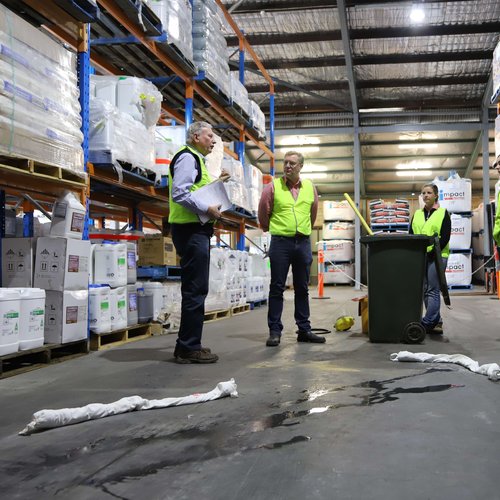Placarding is essential for maintaining safety and regulatory compliance in agricultural and veterinary (AgVet)retail premises.
It provides clear hazard identification for workers, visitors, and emergency responders, ensuring safe handling and storage of dangerous goods.
Proper placarding enhances workplace safety and ensures businesses meet their legal obligations.
Key placarding requirements
Placarding involves placing designated signage on buildings, gates, and storage areas where dangerous goods exceed prescribed limits and it serves to:
•Alert personnel to hazardous substances.
•Identify bulk storage of dangerous goods.
•Indicate designated storage areas for hazardous chemicals.
•Provide emergency responders with vital hazard information.
Best practices for placarding compliance
1.Maintain a dangerous goods manifest:
Keep an updated record of stored dangerous goods and combustible liquids, ensuring alignment with emergency site information.
2.Identify placard thresholds:
Determine if stored quantities exceed jurisdictional placarding limits to comply with signage requirements.
3. Display outer warning placards:
If thresholds are exceeded, place HAZCHEM signs at workplace entrances for emergency services, using red lettering on a white or silver background.
4.Storage area placards: Post placards with the appropriate class labels (asper the Australian Dangerous Goods (ADG) Code) at hazardous chemical storage areas.
5.Placarding for intermediate bulk containers (IBCs): Ensure IBCs containing hazardous chemicals display an Emergency Information Panel as required by the ADG Code.
6.Jurisdiction-specific considerations:
In South Australia, businesses storing Class 6.1 (Toxic Substances) or Class8 (Corrosive Substances) should place placards at all site entrances.
Maintaining placards for compliance
To ensure effectiveness, placards should:
•Remain in good condition, replacing faded or damaged signs.
•Be clearly visible, avoiding placement near conflicting signage.
•Be removed when storage quantities drop below threshold limits.
Importance of proper placarding
Correct placarding benefits businesses by:
•Enhancing emergency response by providing first responders with critical hazard information.
•Ensuring regulatory compliance by helping businesses avoid fines and meet legal obligations.
•Improving workplace safety by reducing employee exposure risks.
•Protecting the environment by preventing spills and contamination.
Responsibility for placarding
Business owners, site managers, and safety officers are responsible for implementing and maintaining placards.
Regular inspections and staff training help uphold compliance and safety standards, and proper placarding is crucial for safety, compliance, and effective emergency response.
Businesses which follow best practices reduce risks and demonstrate responsible chemical management.
For more details on placarding requirements, visit the Agsafe website and read their latest blog.





